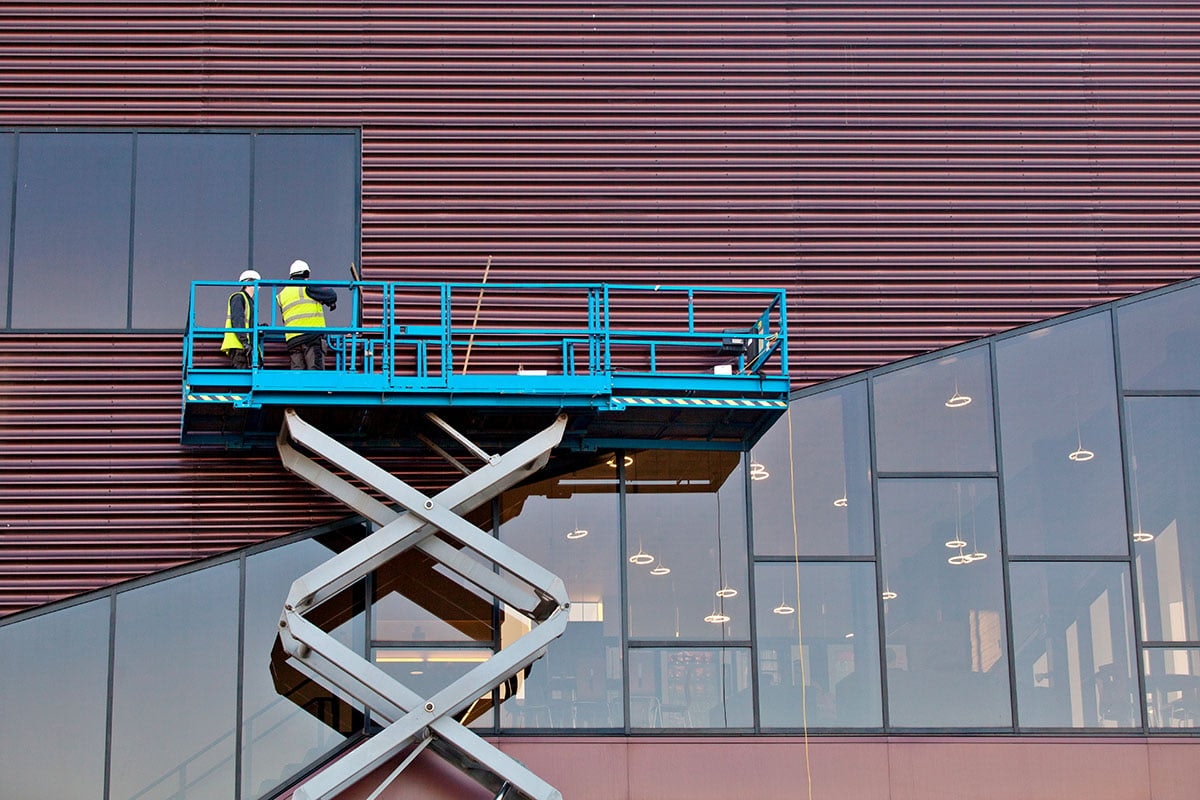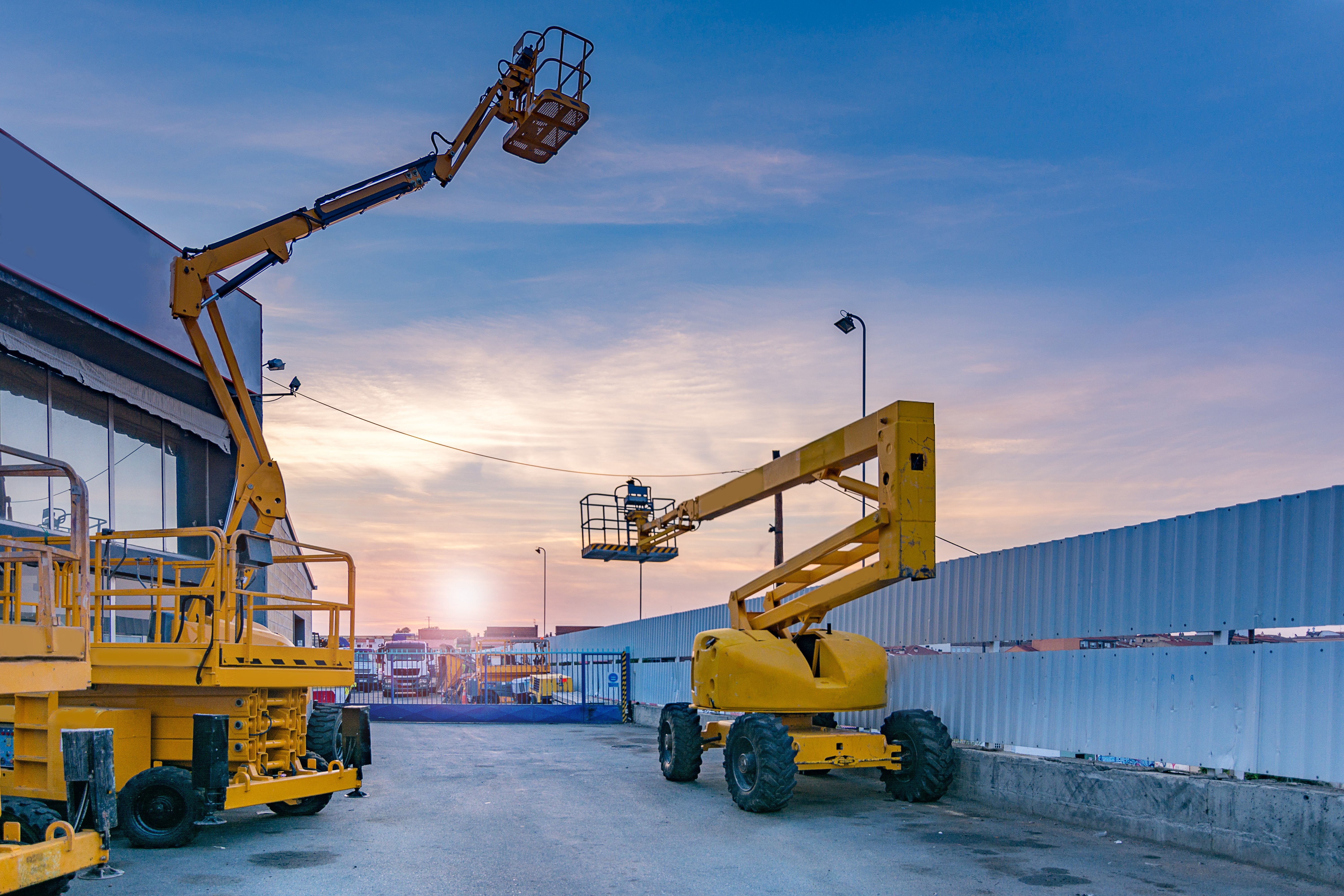If you've got a job that requires access to high places that you are unable to reach on your tippy toes, or with conventional ladders, you might be thinking about hiring an elevated work platform (EWP) or a scissor lift. The big question is - which one will get your job done?
Scissor lifts and boom lifts are both elevated work platforms by definition, however, they operate differently to safely elevate workers up to high and hard-to-reach places. Which one you need depends on the site & the height.
What is a scissor lift?
Scissor lifts are elevated work platforms that can only move in the vertical plane. They lift personnel, tools, and supplies up to hard-to-reach places. They have no telescopic or rotational ability compared with boom lifts. Scissor lifts can be self-propelled, trailer or truck mounted, and have optional outriggers or stabilisers.
While a small scissor lift may only have space for one or several workers, larger platforms can accommodate a whole team, with barriers keeping them safely enclosed. On iseekplant you can hire diesel scissors and electric scissors - which of course depends on whether or not you can access mains power on your site. They are called scissor lifts because their struts look like scissors.
Smart, huh? You can read about the top scissor lift brands in the country here.

What is a Boom lift?
Boom lifts are hydraulically controlled and are the highest-reaching EWP. They are aerial lift that allows operators to be raised and moved horizontally and vertically to complete work indoors and outdoors. There are two main types of boom lifts:
- Straight booms – telescopic boom lifts offer the highest vertical reach of any access equipment, over 40 meters (135 feet).
- Knuckle booms – articulating boom lifts with jointed arms lack the height of straight booms, but they make up for it in improved access when an up-and-over approach is required.
Check out the best boom lift brands here.

Find access equipment hire near you
How to Choose Between a Scissor Lift and Boom Lift
To decide what type of lifts are right for your project, ask yourself the following questions:How high do you need to reach?
Boom lifts offer more overall reach compared to scissor lifts, with straight boom lifts offering two to three times the height of scissor lifts. This could be the deciding factor if you're working on a tall structure or doing arborist work, but a scissor lift could also be a lifting option at heights below 20 meters.Are there any obstacles in the way of where you need to reach?
Boom lifts are the ideal solution for areas that aren’t completely clear of obstacles. A knuckle boom lift can be guided over, under, and around obstacles for access to hard-to-reach areas. Many straight booms can also be set at a range of angles for upward or downward reach. Scissor lifts are limited to straight vertical movement, making them less capable of maneuvering around obstacles on site.How many materials or workers need to be lifted?
Every lift has a manufacturer-rated safe weight limit (SWL) and a number of people that can safely occupy the platform. Larger platforms make scissor lifts the best option for lifting multiple personnel at the same time, along with tools and materials, whereas boom lifts can normally only accommodate a single worker.Is it an indoor or outside job?
Where the work needs to be completed plays a key part in which type of lift needed to be used. Boom lifts are most commonly used outdoors, while most scissor lifts are designed for indoor use in factories, warehouses, and other enclosed spaces. The exception is rough terrain scissor lifts, which can be used on construction sites and other outdoor areas.What is your budget?
The size of your budget to spend on purchasing or hiring an EWP plays a large part in which lift is most suitable for your application. Scissor lifts are cheaper to hire and easier to operate than boom lifts, which makes them the best option on a limited budget. They are also more prolifically found in hire fleets - EWPs tend to be rarer. However, if you need that extra reach or maneuverability, there's no substitute for a boom lift.Do I need a license?
If you or your team will be operating an EWP at heights above 11 meters, you'll need specialised EWP training as well as a High-Risk Work Licence. Click here to read about the licensing requirements for EWPs.
The high-risk license isn't required if you're working at heights below 11 meters, but you'll still need to complete Scissor Lift Training to obtain an EWPA Yellow Card.
Click here to read about the licensing requirements for scissor lifts.


